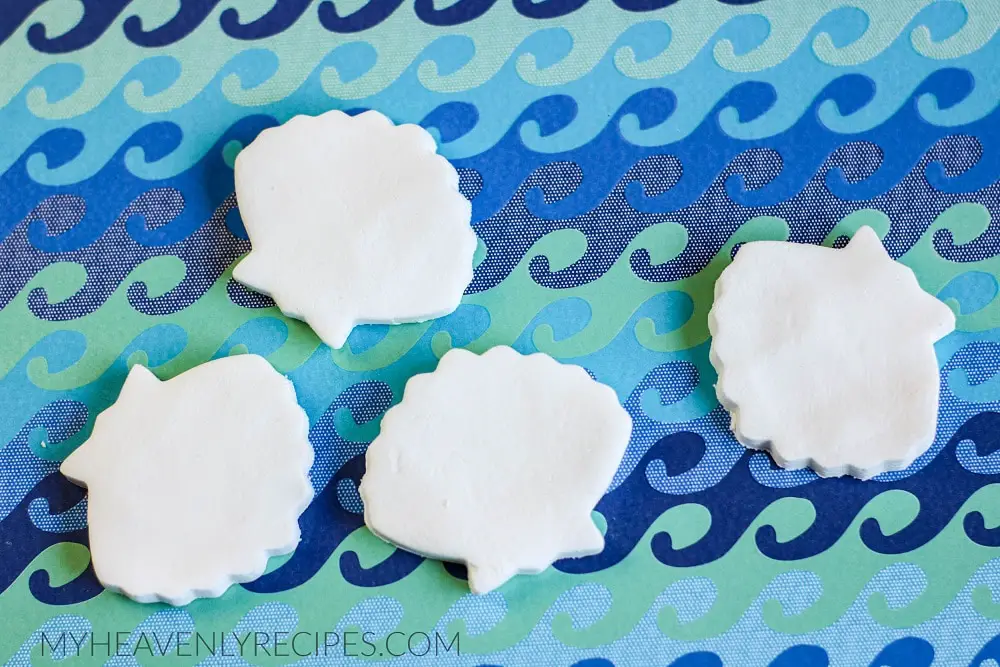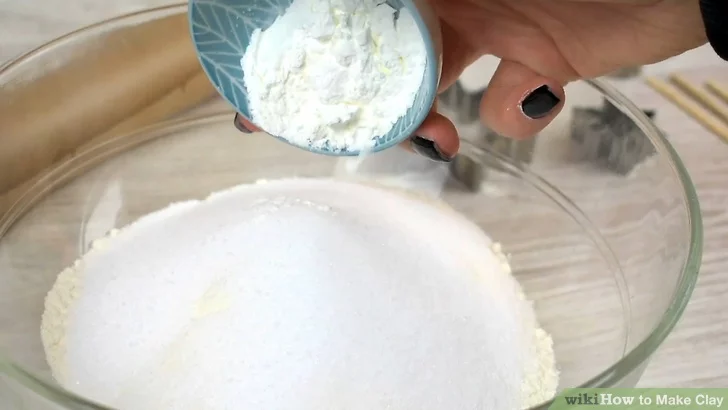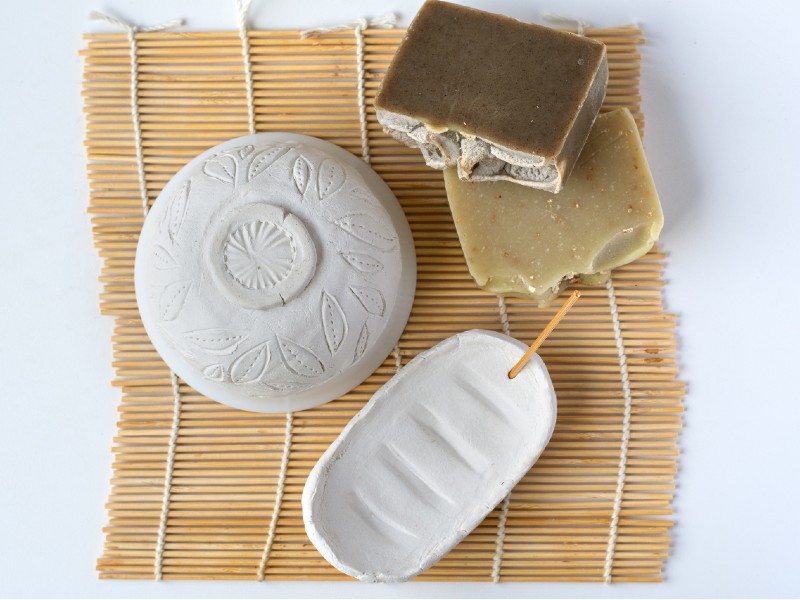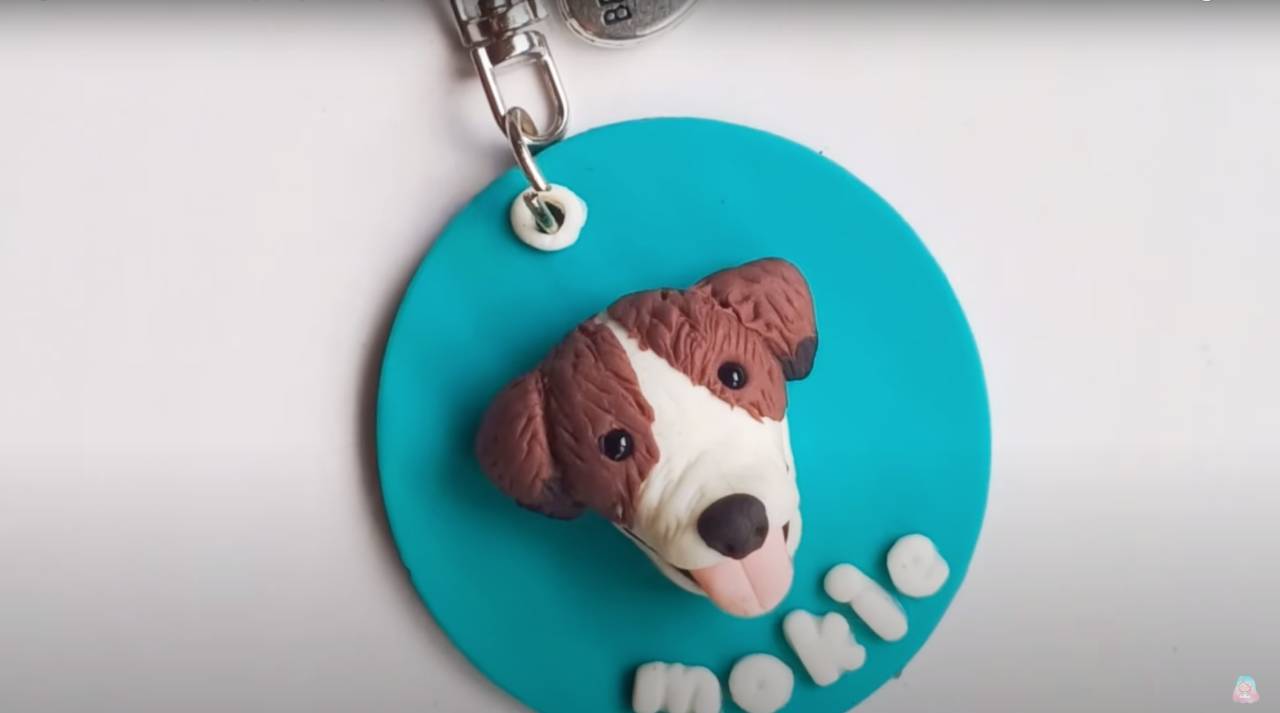Have you ever wondered how to make air-dry clay at home? It’s a great crafting tool and many people use it, especially if they have little ones that love sculpting. A lot of adults enjoy sculpting with it too. After all, few people have access to a kiln for firing clay properly, so air dry clay is a great solution!Fortunately, it’s easy to make, takes only a few ingredients, and is a pretty quick process, so you can whip up a batch with very little time and effort whenever your little artist wants to get their fingers sticky. There are lots of different recipes, so here is a selection for you to try out.See which you like the best, and you’ve got a great go-to recipe for whenever your little one wants to get creative.
Cornstarch Clay
 Source: https://myheavenlyrecipes.com/how-to-make-homemade-air-dry-clay/
Source: https://myheavenlyrecipes.com/how-to-make-homemade-air-dry-clay/
Materials
Cornstarch clay ingredients include:
- 1 cup of cornstarch
- 2 cups of baking soda
- 1.5 cups of water
- Food coloring
- Small pan
- Old spoon for stirring
- Airtight container
- Ziplock bag/plastic wrap
Step 1: Mix Together And Heat
Stir all the ingredients together in a non-stick pot, and then put the pot on medium heat. Cook and stir for a few minutes, watching as the mixture starts to become thicker.Don’t be tempted to hurry this step; if you don’t cook the stickiness out of the dough at this point, it won’t work well, and you’ll end up with a splodgy mess everywhere. You should see the mixture starting to pull away from the edges of the pan before you consider it finished. If you poke the mixture, it shouldn’t feel too sticky to the touch.
Step 2: Leave To Cool
Turn the heat off and set the pan aside to cool, leaving it covered while it does. When it has gone completely cool, you need to find a way to minimize the airflow to your clay if you aren’t using it straight away ““ you don’t want it drying out before you’ve had a chance to sculpt it!You can use plastic wrap for a really effective airtight seal; if you’re eco-conscious and don’t want to use it because of the planet, remember that if you cut a large piece, you can use it over and over again. This may reduce waste in the clay becoming unusable because it has dried out.Alternatively, you could use a ziplock bag and make sure you have squeezed all the air out of it; this can also be reused.Once the clay is wrapped up, transfer it to an airtight container for a second layer of protection and seal the container well.Always keep the clay covered. When you’re using it, leave the part you aren’t working on wrapped up, inside a tub with the lid on to preserve it as much as possible. This might seem excessive, but half-dried clay or fully dried clay will be no good for your kid’s project!
Slime Ingredients Clay
 Source: https://www.kitchentableclassroom.com/air-dry-clay-an-easy-diy-recipe/
Source: https://www.kitchentableclassroom.com/air-dry-clay-an-easy-diy-recipe/
Materials
Slime ingredients clay requires:
- 1 tablespoon of baby oil
- 1 teaspoon of lotion
- 1.5 cups of cornstarch
- 1 cup of white glue
- 1 tablespoon of vinegar (ideally white vinegar or your clay may look brown)
- Extra cornstarch
- Bowl
- Spoon for stirring
- Airtight container
- Ziplock bag/plastic wrap
Step 1: Mix The Dry Ingredients
Mix together the dry ingredients in a bowl until the mixture is smooth.
Step 2: Add The Wet Ingredients
Stir in the wet ingredients and begin to mix. It may take quite a bit of mixing, but don’t worry if the clay stays sticky-looking; this is normal at this point.
Step 3: Knead The Clay
Dust your hands with extra cornstarch and start to knead the clay, adding more cornstarch a little bit at a time. The clay will keep absorbing it, but stop before it becomes dry and ready to crack. It should be just past the point where it stops sticking to your hands but is still soft and damp. This is perfect for modeling.If your clay ends up a bit too dry, just put a little more baby oil on your hands and work it in until you’re satisfied with the consistency.
Step 4: Store In An Airtight Container
Unless your little one is ready to sculpt straight away (or you are!), make sure you have a ziplock bag and a container at the ready to tip the clay into so that it will stay soft and pliable, ready to use. You can also store your clay in the fridge, which will reduce the airflow and keep the clay just slightly damp, helping it to last longer. Making sure your clay is in a big blob, rather than rolled out thin, will help too.
Flour Clay
 Source: https://www.wikihow.com/Make-Clay#Making-Flour-and-Salt-Clay
Source: https://www.wikihow.com/Make-Clay#Making-Flour-and-Salt-Clay
Materials
Air-dry clay ingredients include:
- 1.5 cups of salt
- 1.5 cups of water
- 4 cups of flour
- Bowl
- Spoon for stirring
- Airtight container
- Ziplock bag/plastic wrap
Step 1: Mix The Dry Ingredients
Combine your salt and flour in the bowl, stirring until they are well-mixed.
Step 2: Slowly Add The Water
A little at a time, add water to your dry mix, stirring it as you go. You will start to see the flour mixture combine into a ball.Keep adding water, going slowly so that the mix stays smooth and you don’t end up with lumps in it. Don’t just add all the water and stop, but keep an eye on the clay’s consistency; you may find you need a bit more or a bit less than expected.Keep adding it slowly and mixing it in until your dough is soft and sticks to itself, but not the bowl or the spoon. At this point, you should have enough.
Step 3: Store In An Airtight Container
Again, you need to make sure your clay is in an airtight container if you aren’t using it straight away. Wrap it up and seal it into a Tupperware if possible, for your kids to enjoy later.This kind of clay is great if you want to paint it once it has finished drying out, though you should remember that air dry clay can take a surprisingly long time. Large projects could take three days or even longer. Make sure it is completely dry before you try and paint a project.Because this clay uses edible ingredients, it’s a safe one for young children. This is very reassuring if you want to do some crafts with your little one and they are prone to putting their art into their mouths, though they’ll find it tastes disgusting if and when they try it!
Conclusion
There are many air-dry clay recipes you can try. Experiment with all of them and see which produces the best and most professional results! You may find that you prefer different choices for different projects, but it’s great to have the options.If you find that your clay cracks readily, try to get a little more moisture into it next time. If your clay is too sticky and slumps when you sculpt, add slightly more dry ingredients. Remember that very big projects often will crack more, and encourage your child to sculpt small and medium things instead.
Comments
0 comments




My family members every time say that I am wasting
my time here at net, however I know I am getting experience
all the time by reading such fastidious posts.
Appreciate the recommendation. Let me try it out.
great put up, very informative. I wonder why the other experts
of this sector do not understand this. You must
continue your writing. I am sure, you have a huge readers’ base already!
Hi everyone, it’s my first visit at this web site, and paragraph is actually fruitful for me,
keep up posting such posts.
In fact when someone doesn’t be aware of after that its up to other viewers that they will help, so here it happens.